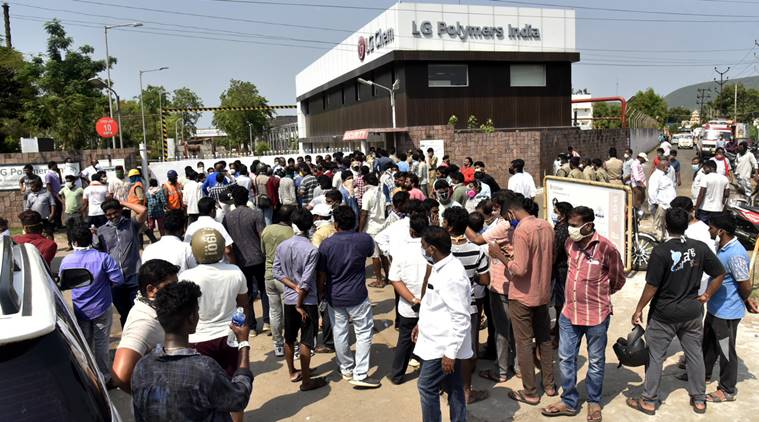
The Indian Express
Seize LG Polymers factory premises, stop directors from leaving India: Andhra HC
A two-member bench of the court has barred entry on the factory premises except for those part of the committee appointed to probe the gas leak accident on May 7 that killed 7 people and injured over 500 others in the villages surrounding the factory.
by Express News ServiceThe Andhra Pradesh High Court has ordered the state government to “seize the premises of LG Polymers” at Visakhapatnam and not allow the directors of the company to leave the country without the court’s permission.
A two-member bench of the court has barred entry on the factory premises except for those part of the committee appointed to probe the gas leak accident on May 7 that killed 7 people and injured over 500 others in the villages surrounding the factory.
It has asked the government to reply why the company was allowed to shift styrene gas to South Korea without the court’s permission when a probe was pending, and who was responsible for it.
“We further direct that none of the assets, movable or immovable, fixtures, machinery and contests shall be allowed to be shifted without the leave of the court,” the order said.
Vizag gas leak | FIR blames ‘some smoke with bad smell,’ names no company staff
The court, which took suo motu cognizance of the styrene gas leak, directed the government to inform it whether LG Polymers had taken permission to restart operations during the lockdown period.
The court also noted that explanations were necessary in the two PILs filed by petitioners. The PILs alleged that LG Polymers has been operating without a valid environmental clearance, the inhibitor concentration, which controls runaway reactions, in the storage tank was not checked, the refrigeration system was not working properly, the radius of the vulnerable zone extended up to 6.3 km from the source and there were several hospitals, educational institutions, places of worship, railways stations, and airport within the vulnerable zone.